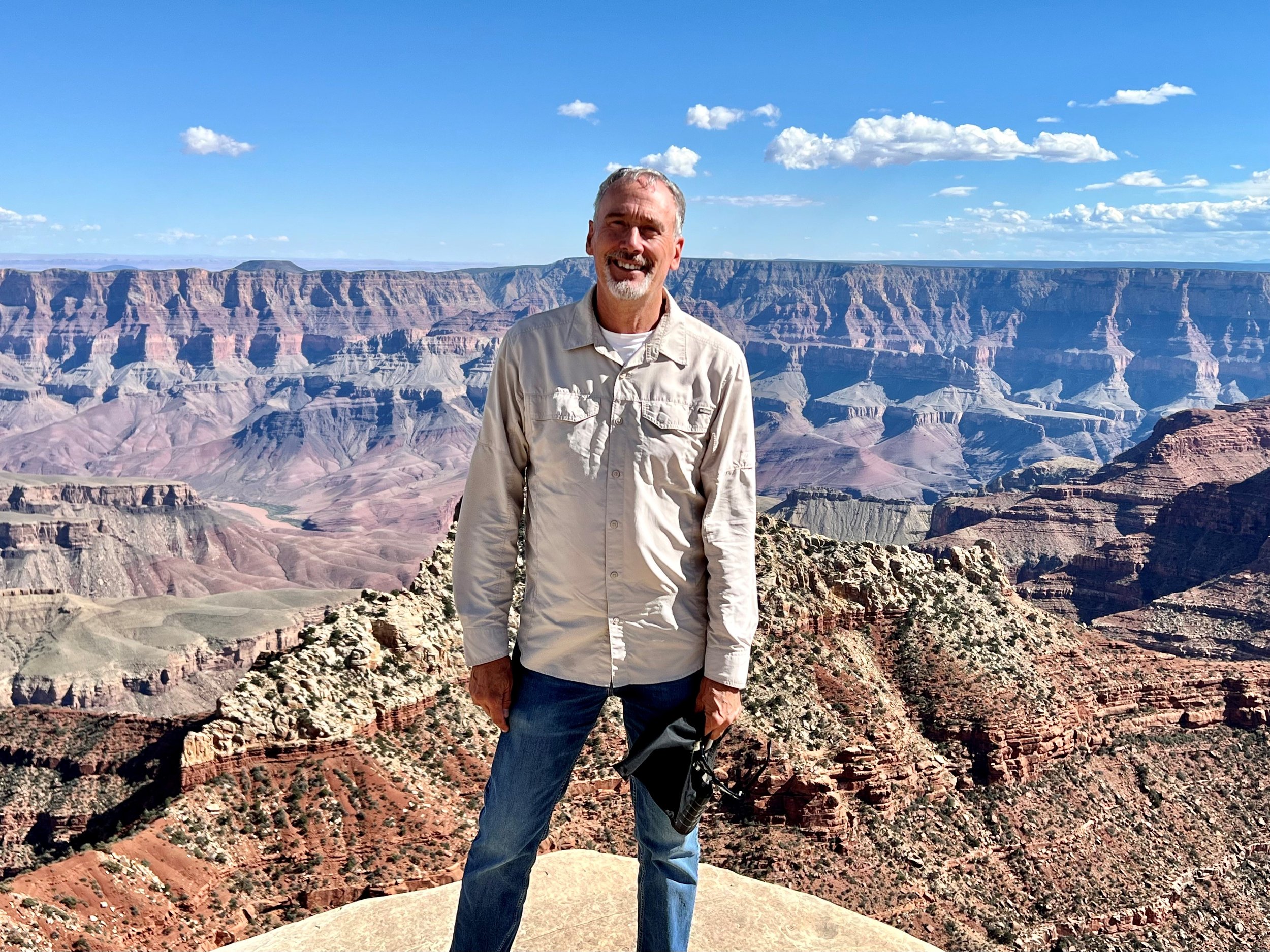Individual Case Review: Knee Arthrofibrosis/Staph Infection
Written by Steve Freers, Former Physical Therapist and Associate Professor of Physical Therapy at Long Beach State University
One of the negative side-effects in this evolving era of managed care, which I often refer to as “standard deviation-based care," is that patients who find themselves in the “outlier’ category are often underserved. Physicians need to be willing to engage and extend their therapeutic offerings to solve outlier problems, rather than using “lack of hard evidence” as cover for avoiding the difficulty of problem-solving orthopedic complications. I know that sounds harsh, but I have personally experienced the “learn to live with it” sentiment on several occasions in the course of my 50-years plus experience with orthopedic care. Recently, had I passively accepted my doctor's initial admonitions following total knee surgery, I would have been stuck in 85-degrees maximum knee flexion. It is now 110-degrees, thanks to my doctor finally acquiescing to allowing me to use the JAS orthosis. By the way, that increase in my knee flexion ROM is a huge functional improvement. I can now get on and off a toilet comfortably, get into any car and drive, safely hike in mountainous terrain, and even ride a bike with simple modifications. Those positive impacts on my life are everything to me, and ostensibly what is supposed to medically matter.
The reticence to prescribe the JAS orthosis in selected cases baffles me. Here’s a question I would ask any doctor: “What is the histological response differentiation between controlled use of the JAS orthosis and PROM exercise?” Seriously. There is no “voodoo” here. Rehabilitation medicine has definitely been plagued by unconventional nonsense for decades. However, that should not bias physicians from logical solutions. The JAS system is not part of, nor should it be considered as, unconventional. That would be silly. The JAS is simply an elegant and patient-friendly method of what a core aspect of physical therapy has been for decades. I know, I am a former registered physical therapist who conducted research and practiced ortho-rehab at the highest levels in the southern California orthopedic community. I switched careers to become a chemistry teacher after a stint as an associate professor with the Long Beach State University physical therapy program. It was there that I discovered my passion for teaching.
I’d like to say this again, the JAS is simply an elegant and patient-friendly method of what a core aspect of physical therapy has been for decades. One of the most difficult and frustrating components of orthopedic aftercare for all professionals is patient compliance. The JAS program is thoughtful, physiology-based, and patient friendly. It is easy for members of a patient’s support system to assist and monitor compliance. That is a big deal. The treatment sessions are incremental and based on patient response—the patient is not locked into a tortuous routine. The staff at JAS are phenomenally responsive to patient concerns—top tier customer support. Doctors do not have to worry about their patients getting the help they need.
On behalf of their patients, it would only take physicians a little of their valuable time to be able to distinguish the JAS system from other orthotic devices and programs. I actually believe that if orthopedists would simply try the brace on themselves, they would have a clearer idea of what is involved. It would most likely convince them that, in certain cases, it is a great option to try. I do believe that a physical therapist should periodically monitor a patient’s progress, but that is far better and less expensive than prescribing unproductive physical therapy sessions. It would be lessen overall pain for their patients, and certainly lessen patient frustration and potential depression. Orthopedists and Physical Therapists alike, in private, would have to admit that the talent, experience, and applied professional practice, of physical therapists varies greatly across this country. That variability affects patients in an insidious way. I would argue that is statistically significant, but also hard to extrapolate to clinical outcomes. However, fidelity with a JAS program can be more consistently applied and assessed, especially for patients with conditions that have been appropriately given the opportunity. Lastly, physicians should not discount the psychological aspect of difficult rehab cases. Patients would likely feel less “abandoned” if they were using a logical and monitored approach. The JAS operation is “their hands” to some extent, and they can modulate the experience with proper coaching from an informed doctor or therapist. I believe, if we are really being “patient-centered,” that outlier patents need to drop into and out of “active rehab” based on their response to it. Certain managed care entities may not like it, but “patient-centered care” shouldn’t be about institutional rigidity. I also know that most physicians did not get into medicine to be subservient to such rigidity.
I am well aware that in 90-95% of all TKA cases, conventional postoperative care and rehabilitation is sufficient. These patients do not need a brace, CPM, or any of the other hardware options. But what about that 2-4 percent of cases that have difficulty, or become MUA candidates? I am one of those. In fact, I am a 1.8% outlier. Here’s a very concise overview of my situation, and remember, I was a registered physical therapist. I had major open reconstructive surgery on both knees at 16-years old for chronic subluxing patellas. At 24-years old, I had a partial meniscal tear in my L-knee, and suffered a post-op staph aureus infection. My leg was casted postoperatively and the resultant pain from increasing swelling could not be ameliorated by morphine sulfate until unconsciousness. I spent 21-days in the hospital following emergency surgery, part of that time in ICU. I received “classic PT” following my hospital release and my knee flexion stalled at 65-degrees. I then underwent a MUA, hospitalized under IV antibiotics again, and casted for two-weeks fixed at 90-degrees. Ultimately my L-knee ROM stalled at 125-degrees. Last year, at 66-years old, I had a L-TKA. My orthopedist did not take a history, nor was he concerned about my history of arthrofibroisis or staph infection. Passively, and against my professionally earned but dated sensibilities, I placed my full faith in the new managed-care paradigm. Sadly, history repeated itself, and my flexion ROM stalled again at 75-degrees. Believe me, I gave my post-op rehab Herculean effort because I knew about the consequences. My surgeon then performed a MUA, but ultimately ended up severally traumatizing my L-LE. He did not taking into account the over 40-years of length-changes in my extensor mechanism, but he did proudly show me a photo of my knee flexion during the MUA. He recounted the enormous difficultly holding my leg down against the surgical plinth in approximately 130-degrees of flexion. My leg was black and blue for weeks, in literal anguish in both pain and effort to ameliorate my ROM issues, and also mentally in the realization that my prognosis was poor. I felt doomed. I had repeatedly asked my doctor if I could obtain a different manufacturer's progressive ROM orthosis. I got the same answer each time, “No, no evidence.”
I was obviously upset. My surgeon kept telling me to just “work the leg.” Fortunately, he was liberal in prescribing physical therapy (which is expensive BTW). My physical therapist, an impressively talented one, became progressively frustrated with my progress and the options to remedy my range limitation. My rehabilitation course changed when I finally challenged my doctor in person. With his permission, I took his index finger and gently bent it back to end-range. I asked him, "How much pressure should I exert and sustain in order to improve its ROM it there was scar tissue limiting extension?” Ironically, he indicated a rather high level of pressure. I asked him, “Why that much pressure?” After a brief discourse by him about tissue remodeling, I told him that was exactly what the JAS does, but with much less force. His response simply floored me, he said, "Really?” The point here is that my physician didn’t really understand rehabilitation options, and just applied lazy intellectual short-hand, a reflexive dismissiveness, as a response to range-of-motion issues and bracing. I told him that I wanted one—period! He said that it made sense and that he was “happy” to help and give the JAS a try. Oh my goodness, why the battle? Importantly, what about people that may not be able to adequately articulate their issues? Of greater concern, how about patients who simply accept a less than optimal outcome and passively comply with whatever their managed-care system “allows?” How convenient for the provider.
Again, in selected and appropriate cases, the JAS incontrovertably helps improve ROM. If there is bias in that comment, it is an earned position. I experienced it first hand.
Reproduced with patient consent. Author receives no compensation, financial or other, from Joint Active Systems, Inc.



